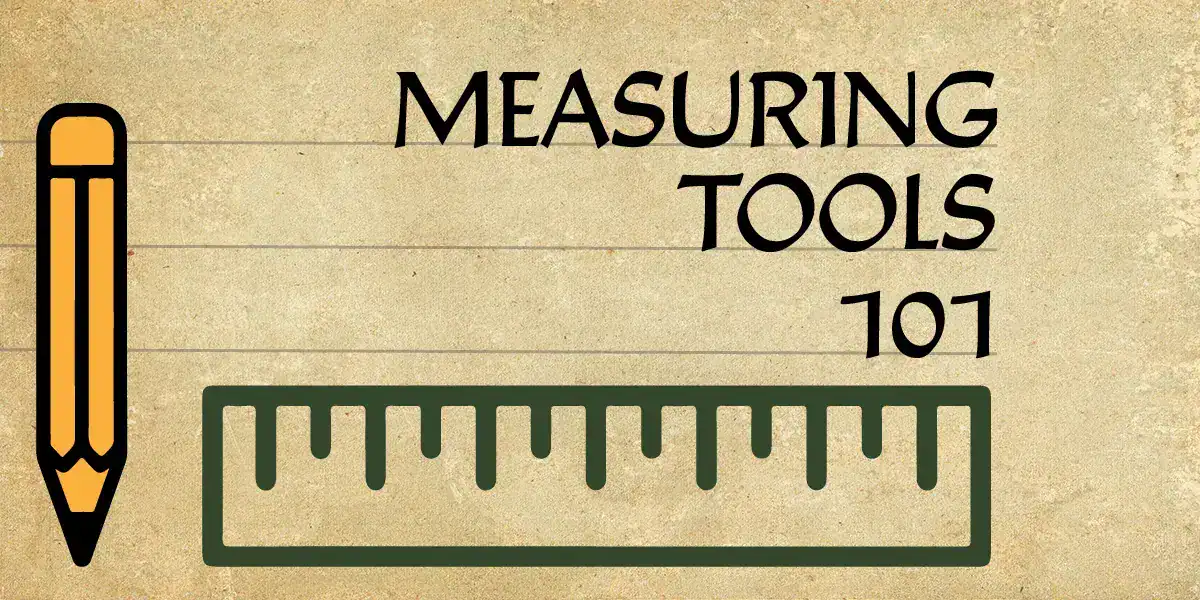Imagine the Egyptian pyramids built without planning and measurements.
You can’t, because there would be no standing pyramids today, just piles of rubble. Careful measurements were the key to the ancient Egypytians’ success.
Many of the measuring tools they used — cubit rods, plumb lines and levels, right-angle squares, and beam compasses — still exist in updated forms and can help you construct a deck or bookcase worthy of a Pharaoh.
This guide describes the seven essential measuring tools every DIYer needs and what each tool does best. We’ll focus on practical applications for typical home improvement projects, from simple picture hanging to complex deck construction.
Why Accurate Measurements Matter
Measurement errors compound quickly. When your first cut is off by a quarter-inch, every subsequent piece must compensate for that error.
Consider these scenarios:
- Kitchen cabinet installation: Uneven measurements result in gaps between cabinets and walls.
- Deck building: Poorly measured boards won’t align, compromising appearance and structural integrity.
- Tile installation: Inaccurate measurements lead to awkward partial tiles at the edges.
- Curtain hanging: Crooked installations make entire rooms look off-kilter and can drive obsessive people up the wall.

Imagine the Egyptian pyramids being built without measurements.
Essential Measuring Tools for Your Toolkit
1. Tape Measure
A quality tape measure handles more measuring tasks than any other single tool. For most home projects, a 25-foot tape measure with a 1-inch-wide blade perfectly balances portability and reach.
Features to Look For
- Blade Stiffness: How far does the tape extend before bending? Good tape measures should extend 8-10 feet horizontally without support, making solo measurements much easier.
- Clear Markings: Look for bold black numbers on bright yellow backgrounds with red markings at common intervals (16″, 19.2″, and 24″ for stud spacing).
- Moving Hook: The hook at the end should move slightly to compensate for the hook’s thickness, ensuring accurate measurements, whether you’re measuring from inside corners or hooking onto edges.
Durability Features
- Rubber grip for better handling
- Belt clip that won’t break off
- Case that survives drops onto concrete
Digital vs Traditional Tape Measures
Traditional Advantages
- Work in any lighting condition
- No battery dependence
- Lighter weight
- Lower cost
Digital Advantages
- Store multiple measurements
- Perform basic calculations
- Display measurements in different units
- Some include built-in levels
For most homeowners, traditional tape measures offer better value and reliability. Consider digital options only if you work with complex calculations or need to store multiple measurements for large projects.
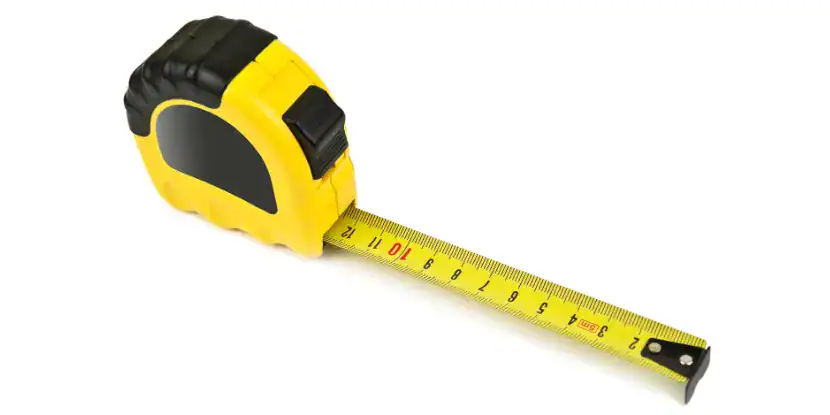
Good tape measures should extend 8–10 feet horizontally without support.
2. Levels
Levels have bubble vials filled with liquid and an air bubble to show when surfaces are perfectly horizontal (level) or vertical (plumb).
2-Foot Levels
- Hanging pictures and mirrors
- Installing towel bars and small fixtures
- Checking short tile runs
- Easy to handle in tight spaces
4-Foot Levels
- The sweet spot for most DIY projects
- Ideal for kitchen cabinet installation
- Perfect for longer shelving runs
- Manageable for a one-person operation
Torpedo Levels
- Typically 9 inches long
- Designed for tight spaces
- Many include magnetic strips for metal surfaces
- Great for plumbing and electrical work
Traditional vs Digital Levels
Traditional Bubble Levels
- Work reliably for decades
- Instantly readable
- Lightweight and inexpensive
- No maintenance required
Digital Levels
- Display precise measurements in degrees
- Can store and recall readings
- Match angles exactly
- Audio alerts when level is achieved
- More expensive and require batteries
For most Southern California homeowners tackling standard projects, a quality 4-foot traditional level handles nearly every situation. Add a torpedo level for tight spaces, and you’re covered.
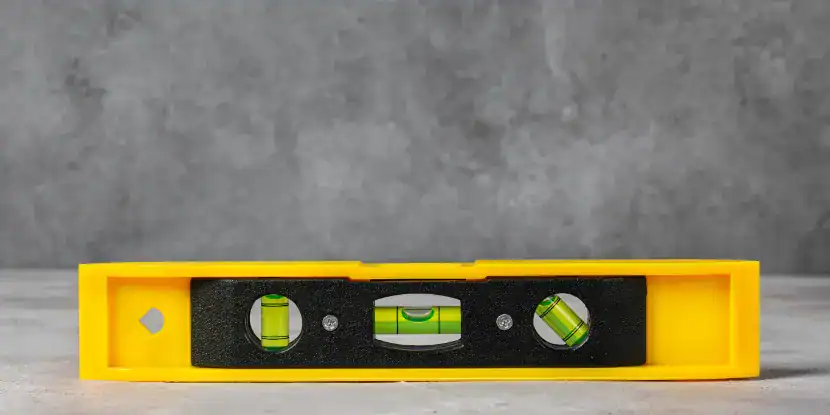
Are you on the level? Only a level tool can tell for sure.
3. Squares
Squares ensure corners are at right angles and help mark straight cutting lines. Without them, projects look askew even when individual pieces are level.
Speed Squares (Triangle Squares)
These triangular tools:
- Check corners for square
- Serve as cutting guides for circular saws
- Help mark angled cuts
- Feature thick lips that hook over board edges for one-handed operation
Speed squares come in 7-inch and 12-inch sizes. The 7-inch version handles most tasks while remaining compact for easy storage.
Combination Squares
These adjustable tools combine measuring and squaring functions:
- Sliding head moves along a 12-inch ruler
- Checks for square and enables consistent measurements
- Particularly useful for woodworking projects
- Essential for furniture building and cabinetry
Framing Squares
Large L-shaped squares (typically 16″ x 24″):
- Used for larger construction projects
- Essential for deck and shed building
- Include reference tables for rafter cuts
- Overkill for most household projects
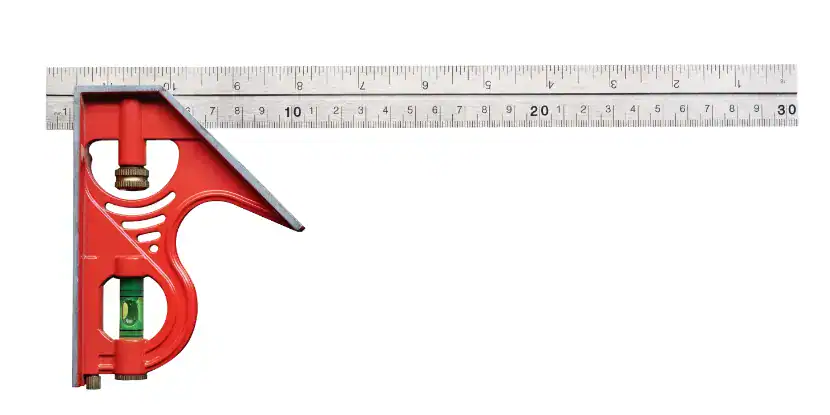
A sliding square tool with built-in level.
Additional Measuring Tools
4. Rulers & Yardsticks
When to Use
- Making small, precise measurements under 12 inches
- Marking straight lines on materials
- Detailed work requiring fine measurements
Best Applications
- Picture frame construction
- Small woodworking projects
- Marking trim cuts
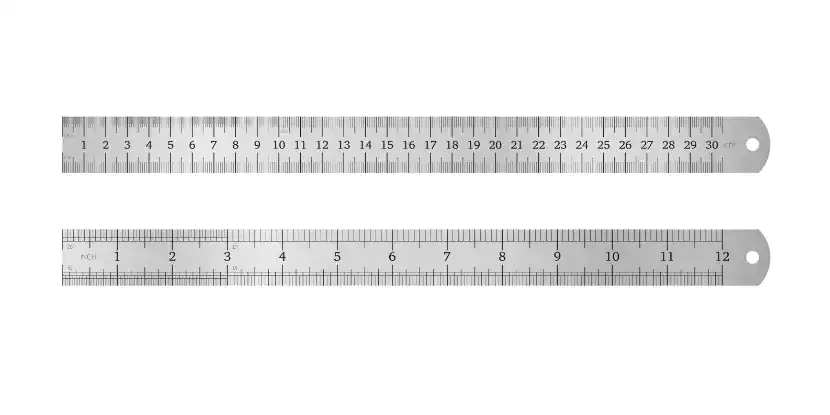
These steel rulers are for the workshop, not nuns.
5. Calipers
Measure thickness, diameter, and internal dimensions with extreme precision.
When to Use
- Measuring pipe diameters for plumbing repairs
- Checking screw sizes
- Precise woodworking measurements
- Automotive and appliance repairs
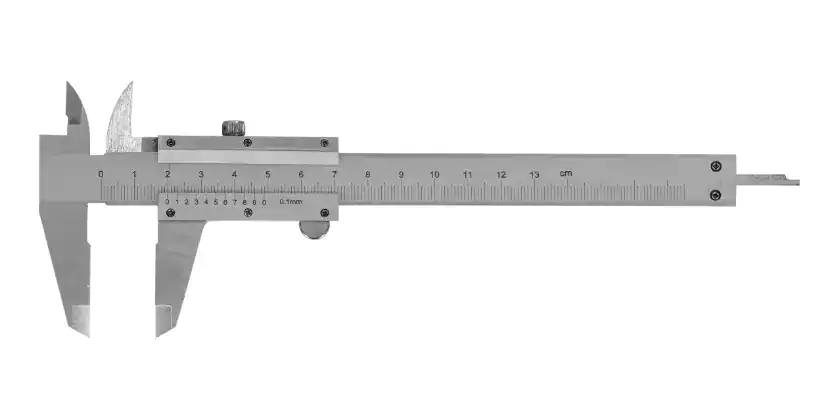
Calipers can measure thickness, diameter, and internal dimensions with extreme precision.
6. Protractor/Angle Finder
When to Use
- Picture frame con
- Measuring existing angles for replication
- Setting saw blades to specific angles
- Transferring angles from one piece to another
Best Applications
- Building furniture with angled pieces
- Installing trim and molding
- Cutting tiles for diagonal patterns
- Measuring roof pitch for repairs or renovations
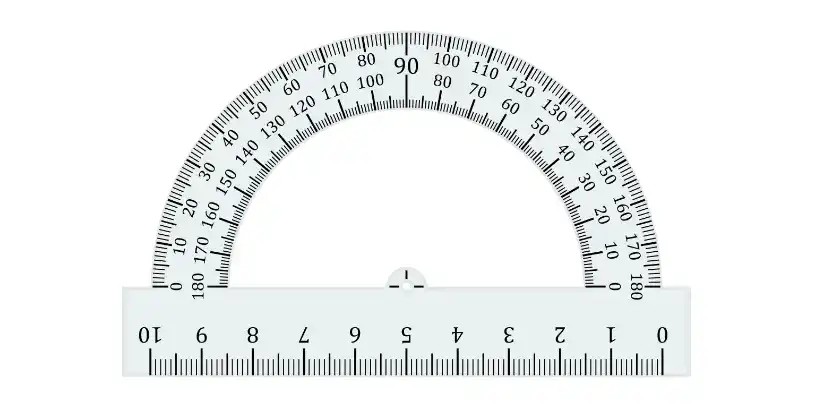
A protractor is best for measuring angles.
7. Laser Distance Measurers
When to Use
- Measuring long distances accurately (up to 400+ feet)
- Working solo without assistance
- Calculating area and volume automatically
- Storing measurements digitally
Best Applications
- Large room measurements
- Outdoor project layout
- Estimating material quantities
- Inaccessible measurements (high ceilings, etc.)
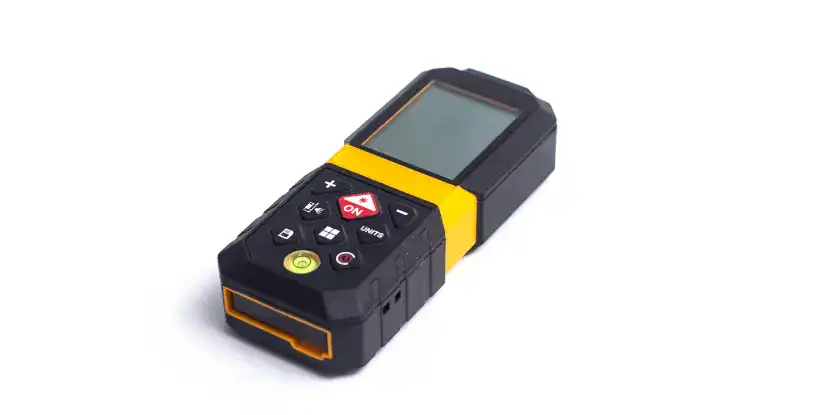
A laser distance measure can give you the dimensions of a large room.
Digital vs Traditional: Making the Right Choice
When Traditional Tools Win
- Reliability: Mechanical tools work regardless of batteries or weather conditions
- Durability: Traditional tools typically handle drops and rough treatment better
- Cost: Traditional versions cost significantly less while providing core functionality
- Simplicity: No learning curve or manual reading required
When Digital Tools Make Sense
- Precision Requirements: When you need measurements more precise than 1/16 inch
- Complex Calculations: Projects requiring area, volume, or angle calculations
- Documentation: When you need to record and share measurements
- Repetitive Measurements: Large projects with many identical measurements
Common Measuring Mistakes to Avoid
Reading Errors
- Misreading fraction markings on tape measures
- Parallax errors when reading levels at angles
- Confusing inside and outside measurements
Tool Limitations
- Using short levels for long spans
- Relying on bent or damaged squares
- Measuring with stretched or damaged tape measures
Environmental Factors
- Temperature expansion of materials
- Measuring on uneven surfaces
- Poor lighting conditions affecting accuracy
FAQs: Measuring Tools
Q: How accurate do measurements need to be for typical DIY projects?
For most household projects, 1/16-inch accuracy is sufficient. Precision matters more for visible work like trim installation than rough construction like deck framing.
Q: Can smartphone level apps replace physical levels?
Phone apps work for quick checks, but aren’t accurate enough for serious projects. Smartphone sensors aren’t as precise as quality bubble levels, and phones are awkward to position correctly on materials.
Q: What’s the difference between a speed square and a framing square?
A framing square is large and L-shaped, primarily used for construction framing. A speed square is triangular, more compact, and better suited for general DIY work.
Q: How do I test if my level is accurate?
Place it on a known level surface, note the bubble position, then flip it end-for-end. The bubble should read the same both ways. If it doesn’t, the level needs replacement.
Q: Should I buy expensive measuring tools or start with budget options?
Start with mid-range tools from reputable brands like Stanley, DeWalt, or Johnson. Ultra-cheap tools are often inaccurate, while professional-grade tools offer features most DIYers won’t use.
Q: How long should quality measuring tools last?
With reasonable care, good measuring tools should last 10–15 years of regular DIY use. Tape measure blades eventually wear out, but cases and mechanisms remain functional much longer.
Q: What size level should I buy first?
A 4-foot level handles most projects while remaining manageable for one person. You can add smaller levels later for specific applications.
Q: Do I need different tools for indoor versus outdoor projects?
The same basic tools work for both, but outdoor projects may benefit from longer tape measures and more weather-resistant construction.

